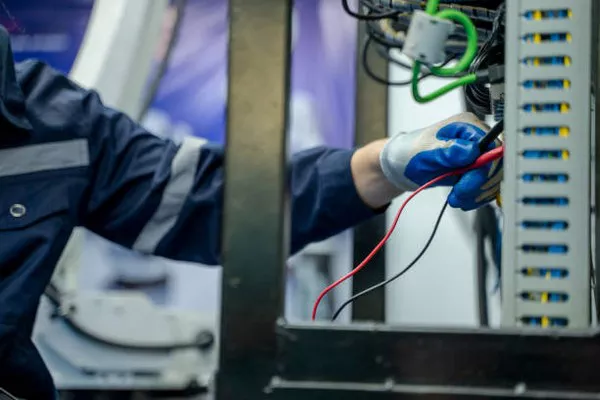When it comes to ensuring the functionality of your doorbell system, one critical component often goes overlooked—the doorbell transformer. Understanding where to locate this device is crucial for maintenance, upgrades, or troubleshooting. This guide will walk you through the steps of finding your doorbell transformer, explain its purpose, and provide tips on what to do once you locate it.
What is a Doorbell Transformer?
Before diving into the search process, it’s important to understand what a doorbell transformer is and why it matters. A doorbell transformer is a device that converts the standard 120-volt household current into a lower voltage, typically 16 volts, required to power the doorbell. This step-down conversion ensures that the low-voltage doorbell components operate safely and effectively.
Why Locating the Transformer is Important
Knowing the location of your doorbell transformer can be crucial for several reasons:
Troubleshooting: If your doorbell isn’t working, the transformer could be the problem. Identifying its location helps in diagnosing issues.
Upgrades: Upgrading your doorbell system or installing a new one may require access to the transformer.
Maintenance: Regular checks can help ensure the transformer is functioning properly and has not suffered any damage.
Safety: Knowing where the transformer is can prevent accidental damage during home repairs or renovations.
Common Locations for Doorbell Transformers
Doorbell transformers are often installed in inconspicuous areas to keep them out of sight. Here are some common locations where you might find yours:
1. Basement
Transformers are often located in the basement or utility room, especially if the transformer is designed to be installed in a low-traffic, out-of-the-way location. Look for the transformer near your home’s electrical panel or other electrical components.
2. Attic
In some homes, the attic can serve as a location for the doorbell transformer. This is particularly common in houses with integrated electrical systems where the transformer can be easily hidden out of sight.
3. Near the Electrical Panel
Transformers are sometimes installed near the main electrical panel. This location is practical because it allows easy access to power. Look for the transformer mounted on a wall or tucked away in a corner near your electrical service panel.
4. In a Closet
Another common place to find a doorbell transformer is inside a closet, often one that houses other electrical components or a small storage area. Check any closets that seem to have electrical equipment or wiring.
5. Inside the Walls
In some cases, the transformer may be installed inside the walls, particularly if it was installed during the construction of the home. This is less common but can occur in homes where the transformer was integrated into the wall system for aesthetic reasons.
6. Garage
Garages can also house doorbell transformers, particularly if the garage is close to the entryway where the doorbell is installed. Look for the transformer mounted on a wall or in a corner.
How to Locate the Doorbell Transformer
Locating the transformer requires a systematic approach:
1. Turn Off Power
Before starting your search, ensure the power to the doorbell system is turned off at the breaker. This precaution prevents any risk of electrical shock and ensures a safer search process.
2. Check Common Locations
Start by inspecting the common locations mentioned earlier: the basement, attic, near the electrical panel, closets, and garage.
3. Follow the Wiring
If you can access the doorbell chime or button, follow the wires leading from the doorbell to their source. The wires will typically lead you to the transformer. Look for junction boxes or wiring conduits that may indicate the transformer’s location.
4. Use a Voltage Tester
A voltage tester can help identify the presence of a transformer. Check different areas where you suspect the transformer might be located. If you detect a low voltage, you’ve likely found the transformer.
5. Consult Home Blueprints
If you have access to your home’s blueprints or electrical schematics, these documents may indicate where the transformer is installed. Blueprints can provide a detailed layout of electrical components.
What to Do Once You Locate the Transformer
Once you’ve successfully located the doorbell transformer, here’s what to consider:
1. Inspect for Damage
Examine the transformer for any signs of wear, damage, or corrosion. If the transformer is damaged, it may need to be replaced. Look for rust, frayed wires, or any unusual odors.
2. Check Voltage Output
Using a multimeter, check the voltage output of the transformer to ensure it matches the required 16 volts. If the voltage is incorrect, the transformer may need adjustment or replacement.
3. Clean the Transformer
Dust and debris can accumulate around the transformer, potentially affecting its performance. Carefully clean the area around the transformer, taking care not to damage any wiring or components.
4. Consider Upgrades
If you’re upgrading your doorbell system, you may need a transformer with a different voltage rating. Ensure the new transformer is compatible with your doorbell system and follow installation instructions carefully.
5. Secure the Transformer
Ensure that the transformer is securely mounted and not at risk of being dislodged. A loose transformer can lead to poor connections and unreliable doorbell operation.
See Also Current Transformers: Applications & Significance
Conclusion
Locating your doorbell transformer is a crucial step in maintaining and upgrading your doorbell system. By understanding common locations and employing systematic searching techniques, you can efficiently find your transformer and ensure your doorbell operates reliably. Regular inspection and maintenance of the transformer will help avoid issues and prolong the life of your doorbell system.

